7 Creative Real Estate Listing Descriptions That Captivate and Convert

7 Creative Real Estate Listing Descriptions That Captivate and Convert
When selling a property, the creative real estate listing description is critical to your sales strategy.
The art of writing a compelling listing description can be a critical way to sell faster and for a better price.
This is more than just a collection of room counts, square footage, and amenity lists. It’s your chance to tell a story, paint a picture, and truly sell the lifestyle that the property offer.
In this guide, we will share 7 best creative real estate listing description examples that work in 2024.
Why is a creative real estate listing description important?
Say, you’re on a virtual house hunt.
With countless properties at your fingertips, what will make you click on one listing over another?
The answer lies in the creative real estate listing description. It draws attention to a property, making it stand out among thousands of options.
An effective listing description is more than a factual summary of a property’s features. It’s the first interaction potential buyers have with the property. It can evoke emotions, help the potential lead imagine, and inspires decisions.
Imagine reading, “Experience the charm of this 1920s bungalow, nestled under the canopy of oak trees,” versus “Old house with lots of trees.”
Which one would pique your curiosity?
The listing description serves several crucial purposes in the real estate process.
- It grabs attention. With thousands of properties online, a well-written description can make a potential buyer stop and take a closer look.
A dull or poorly written description might lead them to skip over the listing, even if the property is incredible.
- It can create a memorable impression. A compelling description can paint a vivid picture, turning a generic ‘4 bed, 3 bath house’ into ‘a welcoming family home, complete with a spacious backyard perfect for summer barbecues and a cozy reading nook by the window.’
That visualization can stay with potential buyers long after they’ve left the website, making your listing stand out in their minds.
- A good description can help attract the right buyers. A listing description that highlights unique features or caters to a specific lifestyle can help filter out unsuitable buyers and attract those who are genuinely interested in what the property offers.
For instance, a description emphasizing a home’s proximity to hiking trails and an outdoor shower setup might not appeal to everyone, but it would attract outdoor enthusiasts who value these features.
- Last but not least, a great listing description adds value. In the hands of a skilled realtor or writer, a listing description can present features of a property in a way that increases its perceived value.
For example, a ‘second small room’ can be described as a ‘flexible space ideal for a home office or creative studio.’
Related resources on real estate marketing:
- Complete guide to real estate social media management
- Find the best (free and paid) real estate marketing tools
- Real estate marketing packages and pricing model
- Real estate holiday marketing ideas
- Real estate PPC services (know whether PPC is right for you)
What makes a creative real estate listing successful?
When scrolling through real estate listings, what makes you stop and say, “Wow, this is the one!”?
Well, a successful real estate listing has that special something that catches your eye and makes you want to learn more.
1. Quick overview of the listing
An effective real estate listing begins with a concise, informative summary. Prospective buyers or tenants don’t want to rummage through text to know the basics.
Give your audience a brief snapshot of what you’re offering. An overview as simple as “3BHK, 2-bath, 2000 sqft home in downtown, priced at $500,000” gives a rapid sense of what the property offers.
This sets the stage and invites the reader to learn more.
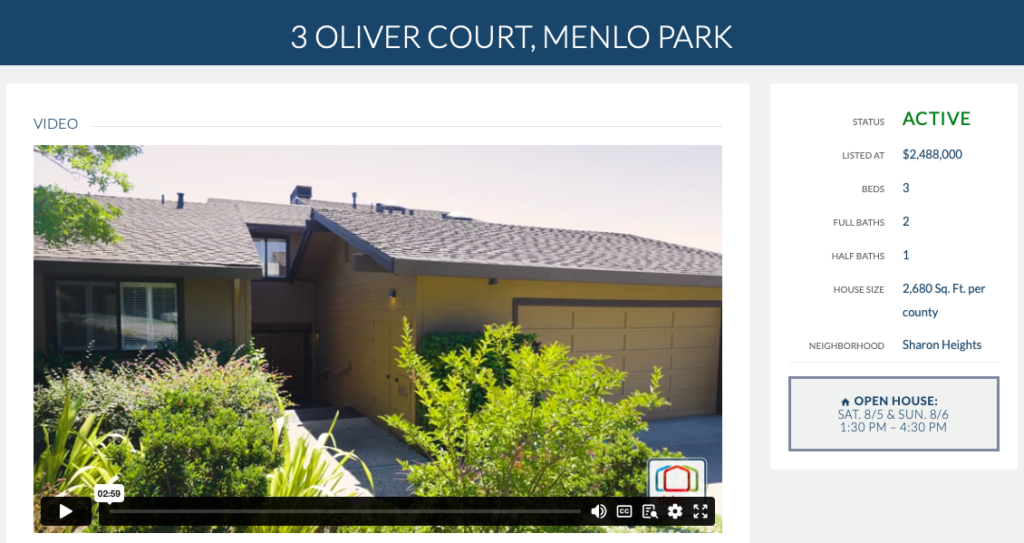
2. Accurate & detailed information
Nothing diminishes credibility faster than inaccurate details.
Buyers appreciate thorough, precise information about the property. Instead of “big kitchen,” use “a spacious, 20×15 kitchen equipped with state-of-the-art appliances.”
Mention the square footage, number of rooms, bathrooms, any notable features, recent upgrades, and property history.
3. Compelling description
Creating a vivid, compelling narrative is where you get to flex your creative muscles.
Turn your listing into a story, and invite readers to envision their lives unfolding within the home.
For instance, “Imagine cozy winter evenings, warmed by the original brick fireplace in the living room. Summer brings its own charm as you enjoy sun-drenched afternoons on the expansive patio, perfect for barbecues and garden parties.”
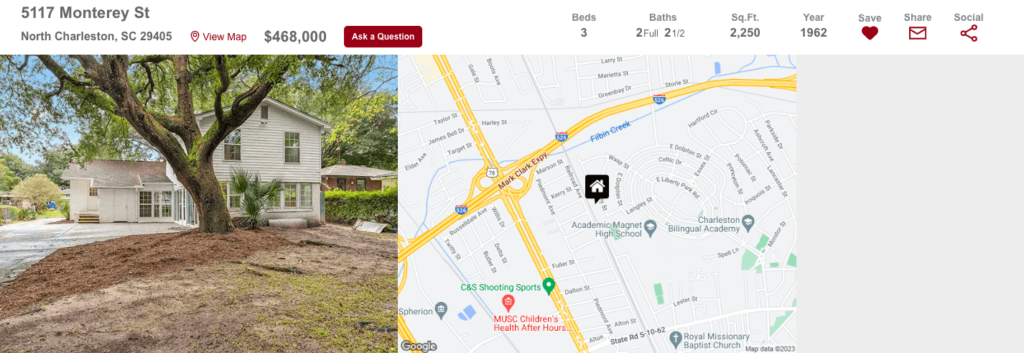
Here’s an listing description example:
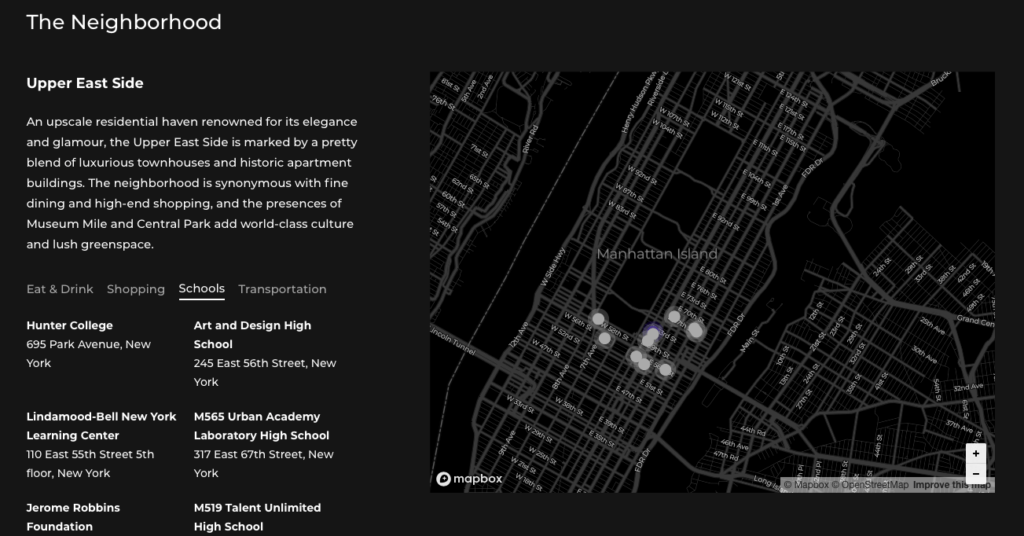
4. Show images and videos
A picture is worth a thousand words and high-quality, professional images are invaluable in real estate.
Showcase every nook and corner of the property – from the gleaming hardwood floors to the airy, light-filled rooms.
Add videos for a virtual walk-through experience, allowing potential buyers to explore the space from the comfort of their homes.
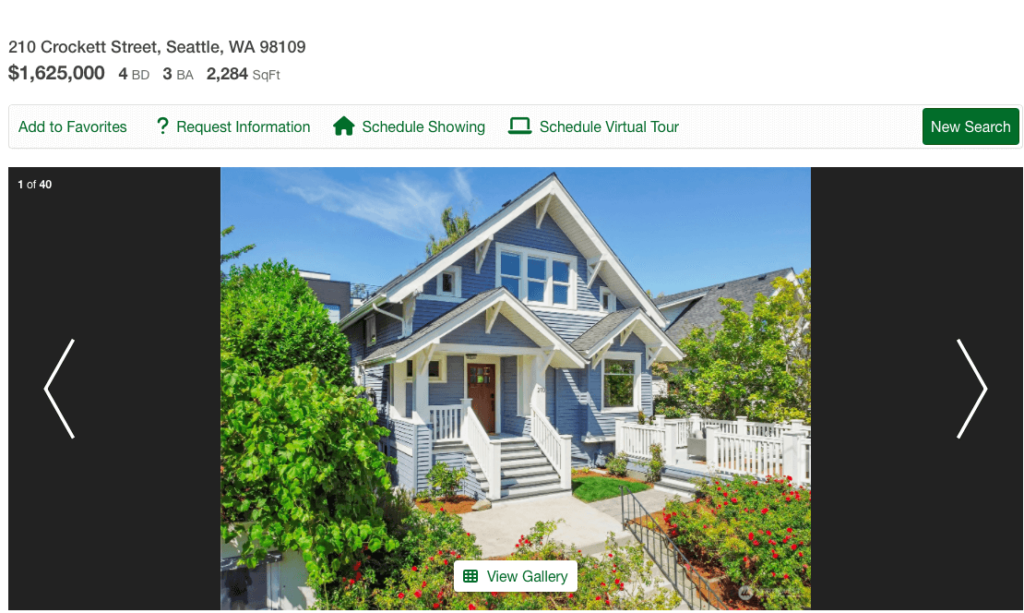
5. Add 3d videos or image options
Take your visual representation a step further with 3D videos or images. These offer a more immersive perspective, giving buyers a sense of depth and spatial orientation.
A 360-degree virtual tour can help prospective buyers feel as if they’re walking through the property, assessing the layout and flow in a way that traditional photos cannot provide.
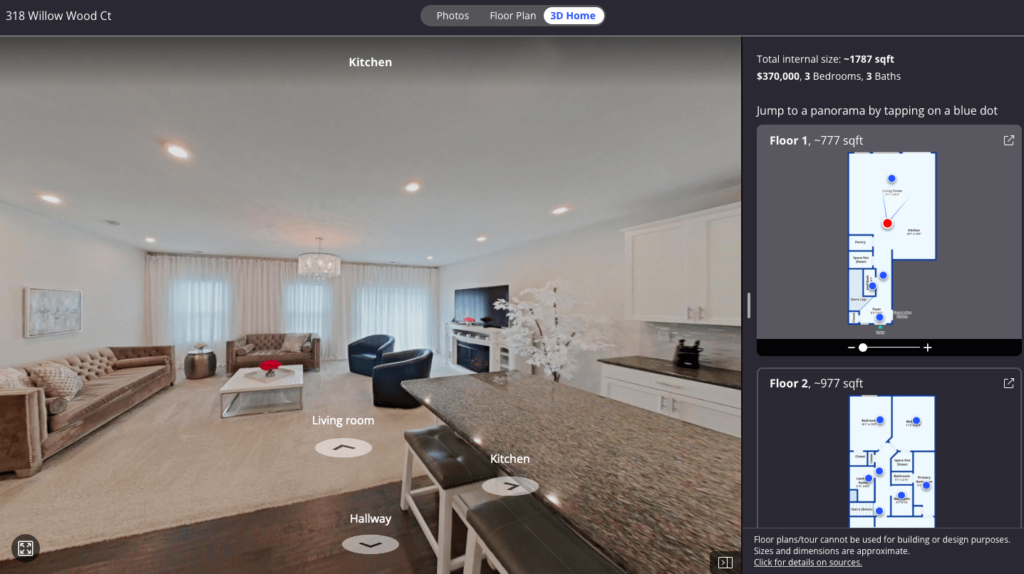
6. Highlighting the neighborhood & amenities
Homes don’t exist in a vacuum. The surrounding neighborhood and local amenities significantly influence a buyer’s decision-making process.
Discuss proximity to schools, parks, shopping centers, transportation, and other local attractions.
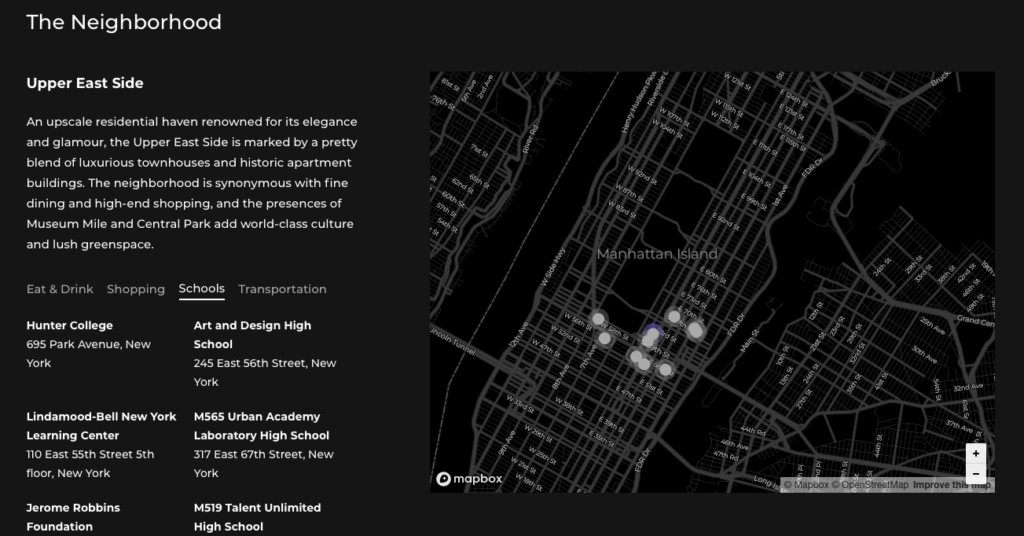
If your listing is in a community with shared amenities, like a pool or fitness center, highlight these perks.
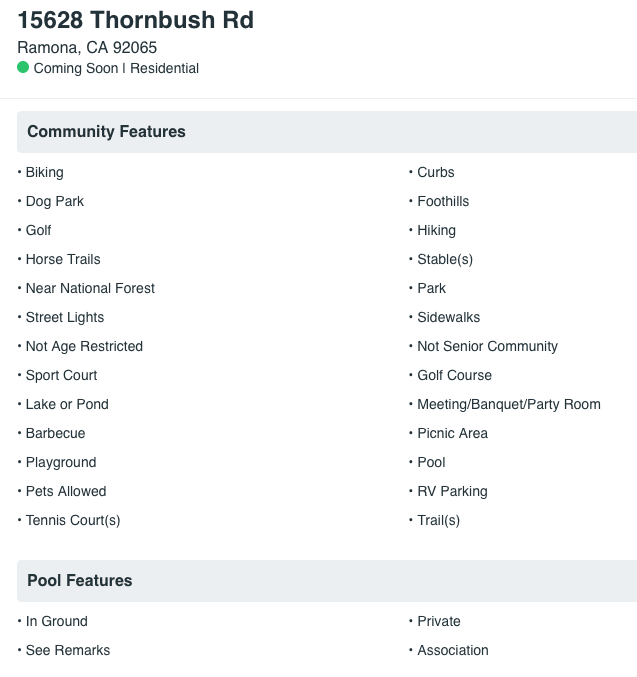
7. Improve the readability of the creative real estate listing descriptions
An effective listing is also well-organized and easy to read. Use bullet points or headers for important details, keep your paragraphs short, and your language simple yet engaging.
Make sure your spelling and grammar are on point; errors can undermine a buyer’s confidence in the listing.
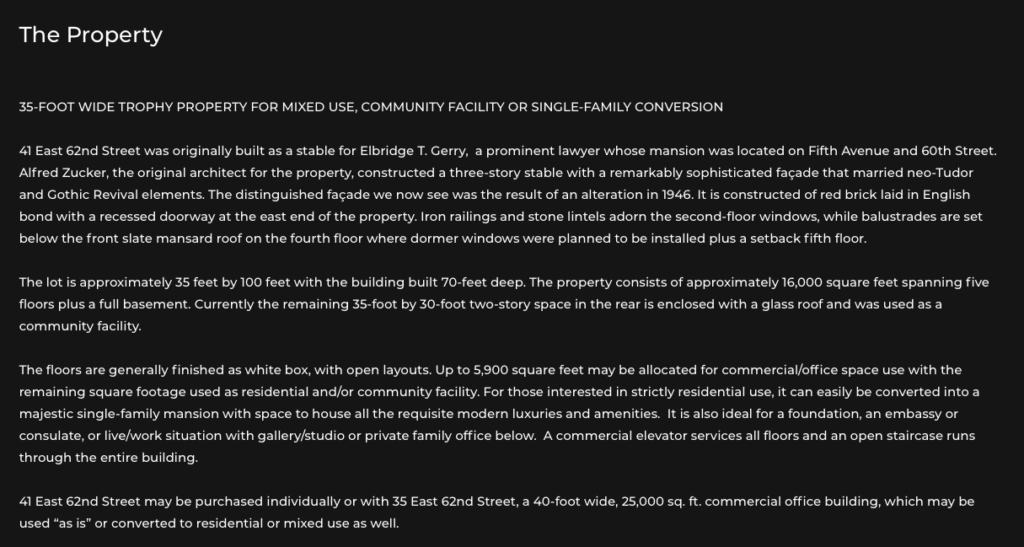
8. Location map
Finally, integrate a location map into your listing. A map verifies the listing’s location and gives potential buyers a bird’s eye view of the surrounding area.
Visualizing the property’s location can help buyers understand its proximity to important landmarks or amenities, and see where it sits in relation to major roads or other key parts of the town or city.
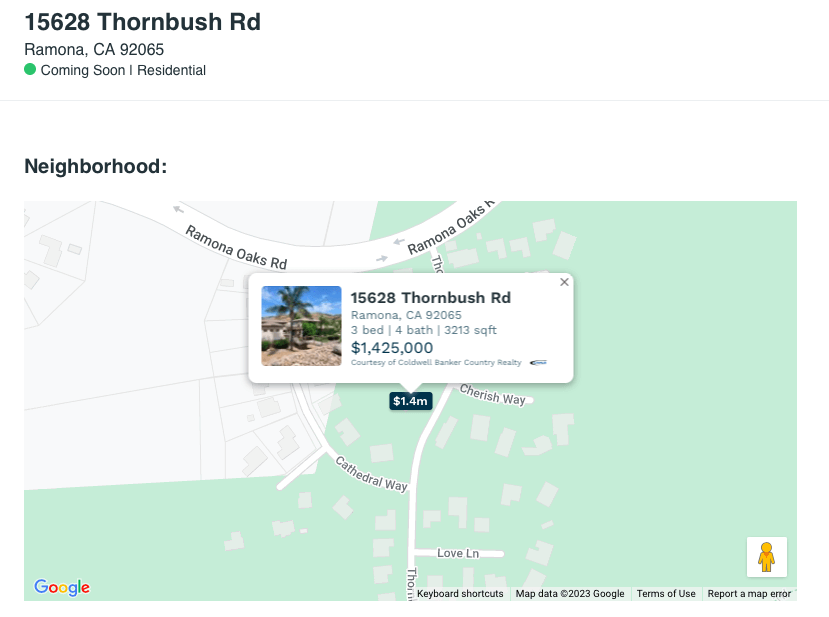
7 Creative Real estate listing description examples
From countless listings, we’ve picked a few which will give you a real-world glimpse into how impactful, engaging, and persuasive property listings are crafted.
Each example has been carefully chosen for its ability to paint a vivid picture in the reader’s mind, bringing the property to life and evoking a sense of desire.
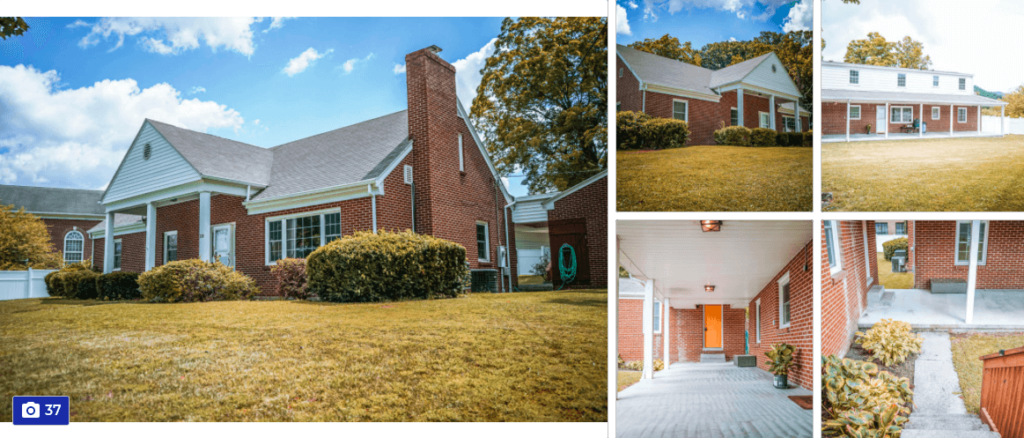
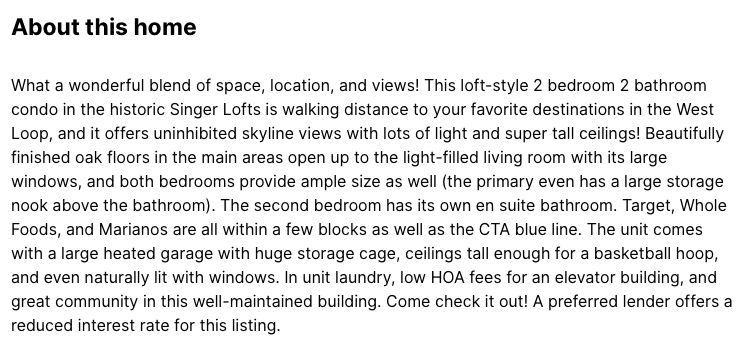
What makes this description good?
- The initial hook: The description begins with an enticing statement, “What a wonderful blend of space, location, and views!” This immediately grabs a reader’s attention.
- Use of details: The writer has done an excellent job providing specific details about the property, including the number of bedrooms and bathrooms, the style of the condo, and its location.
- Highlights of the property: The description brings to light certain attractive features, such as skyline views, tall ceilings, oak floors, and large windows, which will likely appeal to potential buyers.
- Proximity to amenities: It mentions how close the property is to grocery stores, the CTA blue line, and other destinations in the West Loop. This would be important for buyers who value convenience.
- Financial perks: The mention of the low HOA fees and the possibility of a reduced interest rate gives the potential buyer a sense of the financial considerations of the property.
How to make it better?
- Organize information: The information could be organized better to make it easier to digest.
For instance, all the details about the condo (e.g., rooms, views, ceilings, floors, etc.) should be clustered together, then information about the building and community, followed by location and nearby amenities.
- Use more sensory language: Improving the description with more sensory language could help potential buyers envision living in the property.
For example, instead of just saying “large windows,” the description could say “large windows that bathe the room in warm, natural light.”
- Add emotional appeal: The description could benefit from more emotive language to create a connection with potential buyers.
For instance, “Imagine relaxing in your light-filled living room as you enjoy uninhibited skyline views.”
- Better presentation of unique features: The distinctive features like the storage nook, a heated garage with a storage cage, and a naturally lit garage could be better presented to create a stronger impression.

What makes this description good?
- Visual Imagery: The description paints a vivid picture of the house and its surroundings using highly visual language.
Terms like “encircled by the natural beauty,” “leafy trees,” and “woodsy retreat” give the reader a clear and attractive mental image of the property.
- Detailed Information: The description provides a lot of detailed information about the property, such as the number of bedrooms, square footage, specific improvements (new floors, remodeled bathrooms), special features (an atrium, a garage equipped for auto repair and detailing), and the presence of an expansive living/media room.
- Location Highlights: It does a great job of highlighting the property’s location advantages.
It mentions proximity to parks, a country club, downtown, and interstate and also underlines the property’s serene, natural setting.
- Reference to Top-Ranked Schools: The mention of access to top-ranked schools is an intelligent addition since it’s often a key consideration for homebuyers.
How to make it better?
- Break Up the Text: The description is currently a single long paragraph. Breaking it into smaller paragraphs or bullet points would make it more reader-friendly and easier to digest.
- Highlight USPs: The description could do a better job of drawing attention to the home’s unique features, such as the garage equipped for auto repair and detailing and the ceiling-mounted projector in the living room.
- Human Touch: The description could benefit from a more personalized, emotional appeal.
For instance, talk about how perfect the deck is for family BBQs or how cozy it is to watch movies in the living/media room.
What makes this description good?
- Detailed and Engaging: The description focuses on the tangible aspects of the house (like the English kitchen, the Judge’s chambers office, and recent renovations) and its intangible qualities (like the tranquil treehouse vibe and the charming old-world atmosphere).
- History and Modernity: The listing effectively blends the historical charm of the property with modern amenities and updates, creating a picture of a timeless and contemporary home.
- Highlighting Upgrades: It also outlines the specific improvements made over the last decade, allowing potential buyers to understand the property’s updated value.
- Location Benefits: The description of the surrounding area and the community gives the potential buyer a sense of the location’s convenience and vibrancy, providing insight into the lifestyle the home offers.
How to make creative real estate listing descriptions better?
- Show, Don’t Just Tell: Instead of telling that the house has an old-world charm or a treehouse vibe, describe what makes it so.
For instance, mention architectural details, design elements, or unique features contributing to these feelings.
- More Emphasis on USPs: Highlight unique features more clearly, like the ‘Judge’s chambers’ office or the quality attic space. Emphasize why these are selling points and how they could benefit the potential buyer.
- Organize Information Better: Try to group related information together to improve the flow of the description.
For instance, discuss all the renovations together in one place rather than scattering them throughout the description.
- Call to Action: Add a clear and compelling call to action at the end to prompt interested buyers to take the next step, such as scheduling a viewing or contacting the real estate agent.
Here’s another example:
What makes creative real estate listing descriptions good?
- Detail Oriented: It paints a vivid picture of the property, allowing potential buyers to visualize it. From the “soaring ceilings” to the “newly refinished hardwood flooring,” the details are specific and tangible.
- Emotional Appeal: Words like ‘ideal,’ ‘WOW’d,’ and ‘cozy’ evoke positive emotional responses. This technique helps the potential buyer to imagine the feelings they may experience while living in this home.
- Location Highlight: The description emphasizes the property’s location advantages, like its proximity to restaurants, shopping, and entertainment options, which can be an important factor for potential buyers.
- Balanced Structure: The description follows a logical flow, moving from the exterior to the interior, then to the local amenities. This sequence makes it easy to follow and understand.
How to make it better?
- Space Utilization: While the description touches on the different spaces within the home, it does not elaborate on the functionality of these spaces.
A more in-depth exploration of how these spaces can be used might create a stronger connection with potential buyers.
- Highlight Key Features: The description does not clearly highlight any unique or standout features of the house that might set it apart from others in the market.
Emphasizing distinctive aspects, such as a renovated kitchen, a large garden, or a luxurious bathroom, might add value to the property.
- Include Technical Details: Though it is great to create an emotional connection with potential buyers, the description lacks important technical details such as the square footage, number of bathrooms, or any recent renovations.
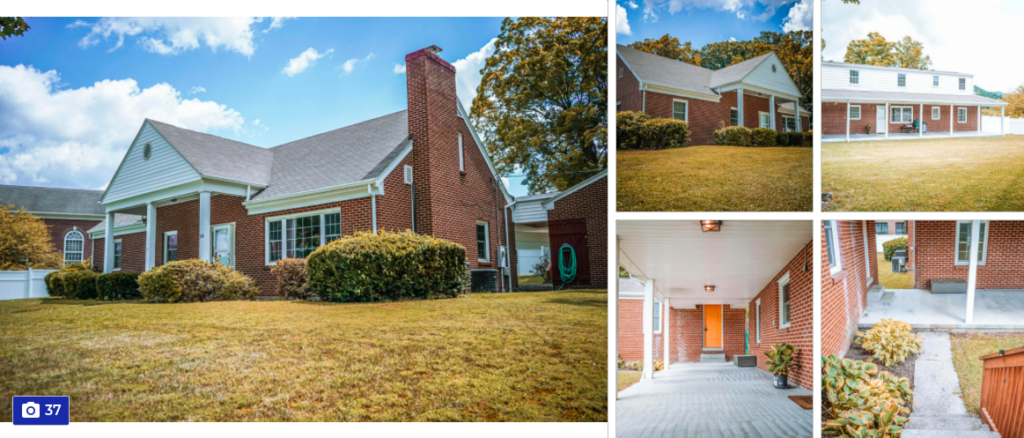
What makes this description good?
- Detailed and Informative: This description does an excellent job of providing all the necessary details about the property.
It includes the property’s size, number of bedrooms and bathrooms, unique features like the library, and storage capacity.
- Highlights Unique Features: The mention of the library room as a unique feature that can be used as an additional bedroom is a great selling point.
- Emotional Connection: It builds an emotional connection with the reader. For instance, it describes the fireplace in the living room as a cozy place to relax on a chilly evening and the fenced yard as a perfect place for family entertainment.
- Location Specific: It also speaks to the location’s convenience, vital in real estate. Being close to downtown White Sulphur Springs for shopping and dining adds to the property’s attractiveness.
How to make it better?
- Active Voice: Convert passive to active voice for a more direct and engaging tone.
For example, instead of saying, “This 5 bedroom and 3 bathroom home is perfect…” say, “You’ll love this perfect 5 bedroom and 3 bathroom home…”
- Add More Sensory Details: Incorporating sensory details can create a vivid image in the reader’s mind.
Talk about the light flooding into the library, the spacious feeling of the living room, or the smell of fresh air in the yard.
What makes this description good?
- Comprehensive: The description offers a detailed account of the property, covering every aspect, from the exterior to the interior, even including a mention of the neighborhood.
- Use of Adjectives: The language used in the listing is full of rich, descriptive adjectives. Words like “stately,” “spacious,” “bright,” “custom,” “high-end,” etc. add character and charm, making the property more appealing.
- Focusing on Key Features: The description highlights key features that might attract potential buyers, such as the granite countertops, high-end appliances, a wood-burning fireplace, and a master bedroom with an en-suite.
It also emphasizes the practicality of the mud room, laundry, storage room, and a potential home office.
- Neighborhood Appeal: The mention of the property’s location in a “highly desirable area,” its proximity to the park, and nearby conveniences enhance its appeal.
How to make it better?
- Storytelling: The current description is more of a list of features. Adding a bit of storytelling can make it more engaging. For example, painting a picture of how someone could use the space or what living there could be like.
- Break up long sentences: The description uses several long, compound sentences that make reading difficult. Breaking these into shorter, more digestible sentences can improve readability.
- Emphasize unique selling points: Unique features of the home or location should be emphasized more, such as the home’s proximity to Alley Pond Park and the large fourth bedroom with skylights.
- Target the likely buyer: Descriptions can be more effective if they are written with a clear target audience in mind and in a conversational manner.
This property might appeal to families, so highlight family-friendly aspects like the large open area in the basement, the sprawling backyard, or the quiet neighborhood.

What makes this description good?
- Vividness: The use of descriptive language to illustrate not only the property’s physical attributes but also the experiences it can provide is very effective.
- Local Attractions: Highlighting the proximity to local attractions, such as Canal Park and Leif Erikson Park, allows potential buyers to grasp the richness of the community and nearby activities.
- Amenities and Features: The description elaborates on the property’s unique features and facilities.
From the open-concept kitchen to the Sonos sound system, it gives potential buyers a glimpse into the kind of luxurious lifestyle they can lead.
- Emotional Engagement: The listing creates a sense of excitement and anticipation with phrases such as “awe-inspiring panoramic views” and “mesmerizing dance of the Northern Lights.”
It appeals to the emotions of potential buyers, which is often a deciding factor in real estate purchases.
How to make it better?
- Brevity: Though details are essential, this description could benefit from some trimming. Long paragraphs can be overwhelming for readers.
- More Focus on the Property: While mentioning the surroundings is great, there is an imbalance between the details about the area versus the property itself.
Providing more information about the property layout, room sizes, finishes, and unique features could be beneficial.
- Highlight Key Selling Points: The unique selling points of this property (like its waterfront location and the view of the Northern Lights) should be emphasized right at the beginning.
This “hook” can grab readers’ attention and make them want to read more.
- Personal Touch: The description could be better with a more personal touch. For example, you can speak directly to the reader about how they might enjoy the property or use specific features.

Drive more traffic and leads to your real estate property listing with UpInFifty
Why does UpInFifty make a difference? We focus on writing good property descriptions. A well-written description can make your property more appealing to people.
But it’s not just about writing. We also know how to make your listings easy to find online. That’s where our SEO team comes in.
We use the right words and phrases that people will likely use when searching for properties online. This means your listings can show up higher in search results, helping more people find your property.
Every property is different, and so is every seller. We understand this and write descriptions that fit your property and sales goals. We don’t use a one-size-fits-all approach.
Choosing UpInFifty means you’re not just getting a property description. You’re also getting a better chance to sell your property because more people can find your listing and want to learn about it.
Get in touch with us today to see how we can help you and your real estate business!





